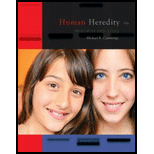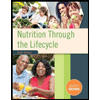
What are Bruce’s options at this point?
Bruce and his parents moved to a semi-tropical region of the United States when he was about 3 years old. He loved to be outside year-round and swim, surf, snorkel, and play baseball. Bruce was fair-skinned, and in his childhood years, was sunburned quite often. In his teen years, he began using sunscreens, and although he never tanned very much, he did not have the painful sunburns of his younger years.
After graduation from the local community college, Bruce wanted an outdoor job and was hired at a dive shop. He took people out to one of the local reefs to snorkel and scuba dive. He didn’t give a second thought to sun exposure because he used sunscreen. His employer did not provide health insurance, so Bruce did not go for annual checkups, and tried to stay in good health. In his late 20s, Bruce was injured trying to keep a tourist from getting caught between the dive boat and the dock. He went to an internist, who treated his injury and told Bruce he was going to give him a complete physical exam. During the exam, the internist noticed a discolored patch of skin on Bruce’s back. She told him that she suspected Bruce had skin cancer and referred him to a dermatologist, who biopsied the patch. At a follow-up visit, Bruce was told that he had melanoma, a deadly form of skin cancer. Further testing revealed that the melanoma had spread to his liver and his lungs. The dermatologist explained that treatment options at this stage are limited. The drugs available for chemotherapy have only temporary effects, and surgery is not effective for melanoma at this stage. The dermatologist recommended that Bruce consider entering a clinical trial that was testing a DNA vaccine for melanoma treatment. These vaccines deliver DNA encoding a gene expressed by the cancer cells to the immune system. This primes the immune system to respond by producing large quantities of antibodies that destroy melanoma cells wherever they occur in the body. A clinical trial using one such DNA vaccine was being conducted at a nearby medical center, and Bruce decided to participate.
At the study clinic, Bruce learned that he would be in a Phase Ill trial, comparing the DNA vaccine against the standard treatment, which is chemotherapy, and that he would be randomly assigned to receive either the DNA vaccine or the chemotherapy. He was disappointed to learn this. He thought he would be receiving the DNA vaccine.
To determine: The treatment options for patient B at the advanced stage of melanoma.
Introduction: Melanoma is the most serious form of skin cancer. Overexposure to the sun is the major risk factor to cause melanoma in any individual. Mutation in the melanocytes leads to melanoma.
Explanation of Solution
When patient B was diagnosed with melanoma, he was at advanced stage of skin cancer. Cancer has already spread in his liver and lungs. He was told by his dermatologist that treatment options are limited at this stage. The chemotherapy has only temporary effects and surgery is useless at this stage of melanoma.
Furthermore, patient B’s dermatologist suggested him to enter the clinical trial in which DNA vaccine will be tested for melanoma treatment. However, after joining the clinical trial patient B got to know that it was a phase III clinical trial. Phase III trial is a comparative study between two treatments and he would randomly be assigned DNA vaccine or chemotherapy.
Hence, patient B has the option to stay in clinical trial to obtain a DNA vaccine or he can take less effective chemotherapy at this stage.
Want to see more full solutions like this?
Chapter 8 Solutions
Human Heredity: Principles and Issues (MindTap Course List)
- Biopharmaceutics and Pharmacokinetics:Two-Compartment Model Instant Absorption Questions Calculate these : a) B1, b) B2, c) hybrid rate constant (1) d) hybrid rate constant (2) e) t1/2,dist f) t1/2,elim g) k10 h) k12 i) k21 j) initial concentration (C0) k) central compartment volume (V1) l) steady-state volume (Vss) m) clearance (CL) AUC (0→10 min) using trapezoidal rule n) AUC (20→30 min) using trapezoidal rule o) AUCtail (AUC360→∞) p) total AUC (using short cut method) q) volume from AUC (VAUC)arrow_forwardUse the Henderson-Hasselbalch equation for a propanoic acid solution (CH₂CH₂CO₂H, pK₁ = 4.874) to calculate the quotient [A-]/[HA] at three different pH values. pH = 4.479 [A-] [HA] [A-] pH = 4.874 [HA] = pH = 5.220 [A-] = [HA]arrow_forwardIn order to establish the expiration date of perishable food, growth curve data must be collected. Once the microbial load is so high that it poses a hazard to human health, the food item is no longer considered safe (expired). Generally a load of x50,000 bacteria/gram is considered unsafe. Your task is to determine the microbial growth curves for MicroYo, a new brand of yogurt. The growth is determined by sampling the yogurt and growing the bacterial isolates in broth culture which is then serially diluted by a total of x10,000 and inoculated onto standard petri plates of nutrient agar. The following colony counts are measured: Time (days) MicroYo colony count# 1 1 4 1 12 2 16 20 4 7 What day should you recommend expiring the yogurt (the last possible date before the microbial load is unsafe). 12 4 20 16arrow_forward
- 9. Chicken combs in chickens is an example where you see interactions between genes. See potential genotypes and phenotypes below. Which genotype, when mated to a rose comb chicken, will produce progeny that are 50% walnut comb and 50% pea comb? walnut (RRPP) walnut (RrPP) pea (rrPP) walnut (RRPP) walnut (RrPp) pea (rrPp) rose rose single (RRPP) (Rrpp) (rrpp)arrow_forwardDescribe a compound light microscope and its importance in microbiology (2) examples of at least two microbes viewed under a compound light microscope and their general characteristics (note: the microbes you choose do not need to be the ones outlined in the above tutorial video) and (3) at least one source you used for the information included in your infographic.arrow_forwardPrice of visit Number of visits $700 0 $600 [1 $500 2 $400 3 $300 4 00000 The Table blow gives the demand curve for doctor visits for Elena. If the price of a doctor's visit is $600, and Elena does not have health insurance, she will visit the doctor times. If Elena obtains 50% coinsurance (the company pays 50% of the medical bill, Elena pays 50%), then Elena will visit the doctor times. 1; 2 0; 3 0; 2 1;4 2; 1arrow_forward
- P 200 150- 100 50 w/instrance/ w/insurance 2 100 Demand Assume that the white curve (labeled "Demand") represents an individual's true demand for this particular health care service. The coinsurance associated with insurance option 1 (in blue) is likely _. 0000 100% 25% 50% 0%arrow_forwardUse the figure below. Bob and Nancy have the same income and total utility.. willingness to pay for an insurance premium will be lower than because they are. risk- averse. Total utility Current utility Bob's utility Nancy's utility 0000 Bob; Nancy; less Nancy; Bob; less Nancy; Bob; more Bob; Nancy; more Current Income incomearrow_forwardConsider the figure below. Suppose the true price of a health care service is P1. Suppose further that the individual has obtained insurance that has a fixed copayment for this particular service. The copayment is represented by price P2. represents the quantity of the service the individual would consume without insurance. quantity of the service the individual would consume with the insurance. Health Care Service represents the P. P₂ a Q1;Q2 Q2; Q3 Q1; Q3 Q3; Q1 Q2; Q1 फ f Q ८ g d h Q3\D 7Q 00000arrow_forward
- The table shows the utility Jordan receives at various income levels, but they do not know what their income will be next year. There is a 15% chance their income will be $25,000, a 20% chance their income will be $35,000, and a 65% chance their income will be $45,000. We know that Jordan is Income $25,000 Utility 2,800 30,000 3,200 35,000 3,500 40,000 3,700 45,000 3,800 ☐ none of the above 0 000 risk taker (lover) because their marginal utility of income is increasing risk neutral because their marginal utility of income is constant risk averse because their marginal utility of income is decreasing risk neutral because their marginal utility of income is decreasingarrow_forwardOOOO a d+e d a+b+c Consider the figure below. Suppose the true price of a health care service is P1. Suppose further that the individual has obtained insurance that has a fixed copayment for this particular service. The copayment is represented by price P2. The social loss from moral hazard if the individual has copayment P2 is represented graphically by the area(s): Health Care Service P. a No 4 ८ e g Q2 Q3 Darrow_forwardOOO O The table shows the utility Jordan receives at various income levels, but they do not know what their income will be next year. There is a 15% chance their income will be $25,000, a 20% chance their income will be $35,000, and a 65% chance their income will be $45,000. We know that Jordan's expected income is. Their utility from their expected income is_ Income $25,000 Utility 2,800 30,000 3,200 35,000 3,500 40,000 3,700 45,000 3,800 $45,000; 3,800 $40,000; 3,700 $25,000; 2,800 $35,000; 3,500 $30,000; 3,200arrow_forward
 Human Heredity: Principles and Issues (MindTap Co...BiologyISBN:9781305251052Author:Michael CummingsPublisher:Cengage LearningLifetime Physical Fitness & WellnessHealth & NutritionISBN:9781337677509Author:HOEGERPublisher:Cengage
Human Heredity: Principles and Issues (MindTap Co...BiologyISBN:9781305251052Author:Michael CummingsPublisher:Cengage LearningLifetime Physical Fitness & WellnessHealth & NutritionISBN:9781337677509Author:HOEGERPublisher:Cengage Nutrition Through the Life Cycle (MindTap Course ...Health & NutritionISBN:9781305628007Author:Judith E. BrownPublisher:Cengage Learning
Nutrition Through the Life Cycle (MindTap Course ...Health & NutritionISBN:9781305628007Author:Judith E. BrownPublisher:Cengage Learning Human Biology (MindTap Course List)BiologyISBN:9781305112100Author:Cecie Starr, Beverly McMillanPublisher:Cengage Learning
Human Biology (MindTap Course List)BiologyISBN:9781305112100Author:Cecie Starr, Beverly McMillanPublisher:Cengage Learning Nutrition Through The Life CycleHealth & NutritionISBN:9781337919333Author:Brown, Judith E.Publisher:Cengage Learning,
Nutrition Through The Life CycleHealth & NutritionISBN:9781337919333Author:Brown, Judith E.Publisher:Cengage Learning,





